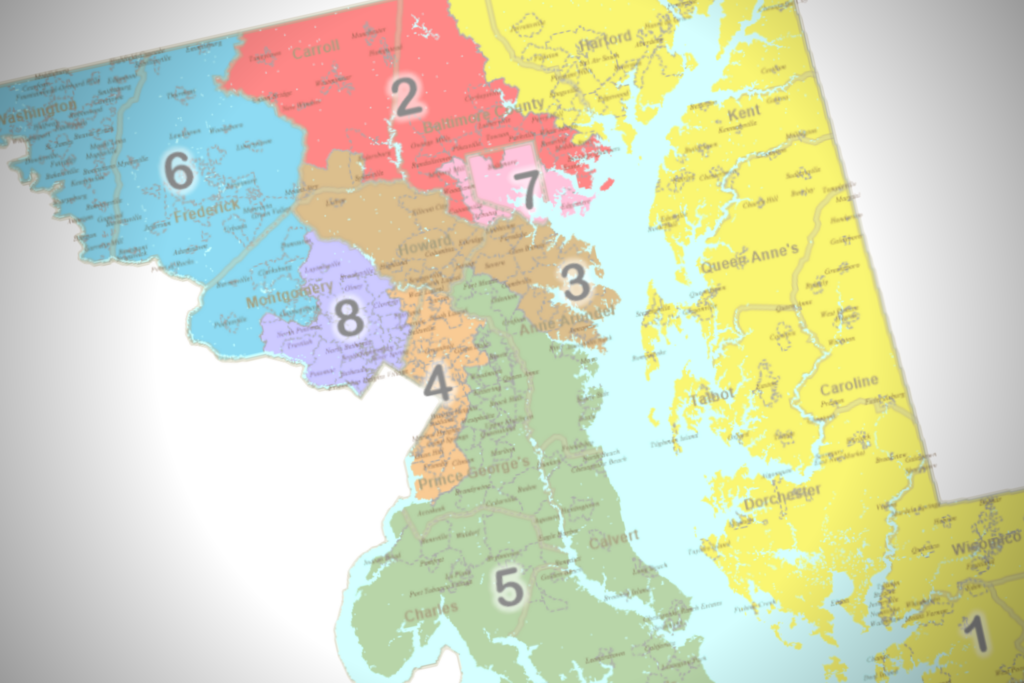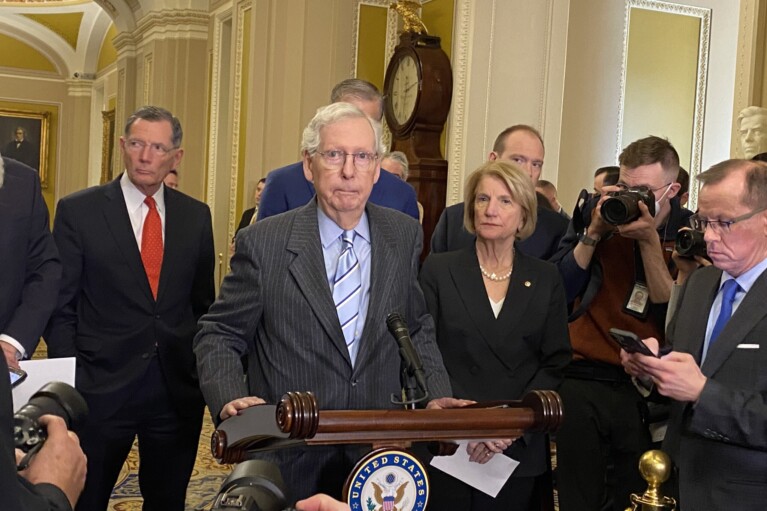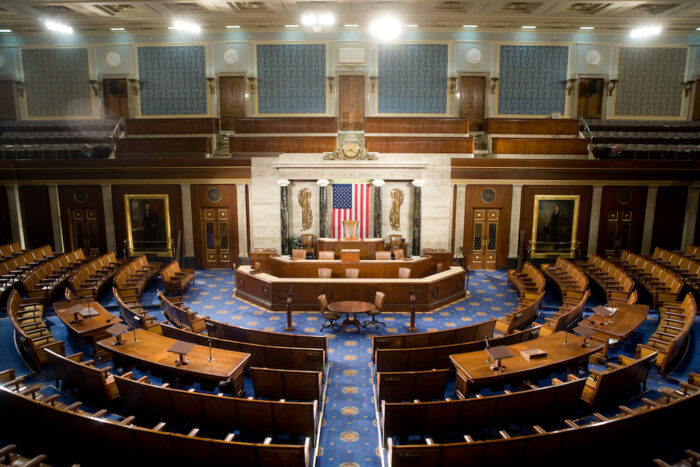Opinion: 3rd Congressional District No Longer an Example of ‘Religious Gerrymandering’

By Howard Lee Gorrell
The writer is a Maryland redistricting reform activist.
“Maloney vs. Nadler? New York Must Pick a Side (East or West),” read a recent headline in The New York Times.
Last month New York State Supreme Court Justice Patrick McAllister, who happens to be a Republican, finalized the Empire State’s congressional map. It created a new 12th District that combined the East and West Sides of Manhattan into a single district for the first time since World War II. It also happened to pit Reps. Jerrold Nadler (D) and Carolyn Maloney (D) against each other in the Aug. 23 Democratic primary. East Sider Maloney and West Sider Nadler, the only current Democratic member of New York’s House delegation who is Jewish, have represented their respective neighborhoods for 30 years in Congress.
Surprisingly, this long New York Times article does not mention the concept of Jewish gerrymandering, though Jewish voters in New York are clearly displeased with the redrawn results. Several Jewish publications in New York argued that mapmakers should not put Manhattan’s East Side and West Side into the same district.
The boundaries were challenged by the Jewish Community Relations Council of New York, which wrote in a letter outlining the cultural distinctions that “East Side Jews can be clearly differentiated from West Side Jews. Rarely do the East Side Jews belong to synagogues located on the West Side, or vice versa.”
The New York Post headlined an article “NYC Jews latest to claim discrimination after Democrats’ gerrymander.” It told readers that several Brooklyn lawmakers criticized the state court-appointed special master’s congressional map. They argued that it would discriminate against the Orthodox Jewish community of Borough Park in Brooklyn, which would be divided into two districts, the 9th and 10th, diluting the organizing power of voters there.
Former New York Mayor Bill de Blasio announced he would be running for Congress in the new 10th District, which stretches from his home in Park Slope, Brooklyn, to Lower Manhattan and includes a chunk of Orthodox voters in Borough Park. Several other candidates of different races and ethnicities are also running there.
Religious gerrymandering in Maryland?
Back on Oct. 14, 2011, as a congressional redistricting buff, I got interested in the topic of “religious gerrymandering” by reading the Baltimore Jewish Times’ headline, “Drawing The Line: Bulk of area Jews to stay in Sarbanes’ district, according to proposed congressional redistricting.”
Then I ran an analysis, and, on Oct. 4, 2012, the Baltimore Sun published an article based on my research, “3rd District called a ‘religious gerrymander.’”
First, I found a little history on what may have caused the original religious gerrymandering. This Jewish Times article states: “For the residents of District 3, it’s a far cry from the controversy of a decade ago [2001]. Back then, Gov. Parris N. Glendening reshaped then-Rep. Benjamin L. Cardin’s 3rd District in what was rumored to be political punishment for Cardin’s considering a gubernatorial run against Lt. Gov. Kathleen Kennedy Townsend, the governor’s handpicked successor.” In 2012, an observer told me, “The Baltimore-area synagogues are concentrated in the northwest section of the city and county and have been part of the 3rd district since the United States Senator Barbara Ann Mikulski’s days [since 1983].”
After Gov. Lawrence J. Hogan Jr. (R) signed a quickly redrawn congressional district map into law on April 4, I re-analyzed and determined that the newly-drawn 3rd District had lost 49 of the 122 active synagogues in the state.
Because the United States has no Census question on religion, I compiled the list of 122 active synagogues from Maven Search: Jewish Web Directory to determine which districts they fell into under the new 2022 map.
As a result, the new 3rd District has only 10 temples, or 8.2% of the statewide count. In comparison, the old 3rd had 59 synagogues with 48.4%.
The new district is now ranked fourth in the state in the number of temples by district after the new 8th District, with 34 synagogues (27.87%), the new 7th District, with 32 synagogues (26.23%), and the new 2nd District, with 22 temples (18.03%.)
Many of the above-mentioned synagogues in Baltimore City and Baltimore County suddenly disappeared from the new 3rd District — which coincidentally is no longer a candidate for America’s most gerrymandered district in the 2020 Census cycle. If re-elected, Rep. Kweisi Mfume (D) will greet more new Jewish constituents in the Northwest corner of the City of Baltimore in his new 7th District, with 32 synagogues. Interestingly, the zip code of 21215 in his new district has 16 temples.
Rep. John Sarbanes (D) decided to seek reelection in the newly-drawn 3rd District, where he does not live; his Towson home now is located in the new 2nd District, which has 22 temples. (The old 2nd District had only two.)
However, there is no requirement for congressional candidates to live in the district they seek to represent. On April 11, Sarbanes told The Washington Post that he would “look forward to waging a vigorous campaign” in the new 3rd District. On Sept. 14, 2018, Sarbanes visited the Jewish Times office and talked about his House resolution to eliminate partisan gerrymandering — a measure that has expanded into a large-scale political reform bill that has been bottled up in the Senate.
Finally, will the new Montgomery County-dominated 8th District, with 34 synagogues, be seen as a new sign of religious gerrymandering? No, the returns of synagogues to this district from the old 3rd District and the old 6th District meet the “community of interest” standard that is often seen as optimal during the redistricting process. The shape of this congressional district is almost a circle — Maryland’s only “circle” district — a very compact shape. And the 8th District is currently represented by the only Jewish member of Maryland’s House delegation, Rep. Jamie Raskin (D).
As for the remaining districts: Under the new 2022 congressional district map, the 1st District has eight synagogues, or 6.56% of the statewide count; the 4th District, with three temples, has 2.45% of the statewide count; the 5th District, with six synagogues, has 4.92% of the statewide count; and the 6th District, with seven synagogues, has 5.74% of the statewide count.
Unlike Jewish New Yorkers, Jews in Maryland have largely been silent about the state’s new congressional map — at least when it comes to the distribution of synagogues by congressional district around the state. But the Baltimore Jewish Times, in an editorial in February, wrote: “Gerrymandering is part of a disappointing race to the electoral bottom that goes against fundamental principles of representative democracy. Until [Democrats and Republicans] agree to stop, the real losers will continue to be American voters.”




 Creative Commons Attribution
Creative Commons Attribution